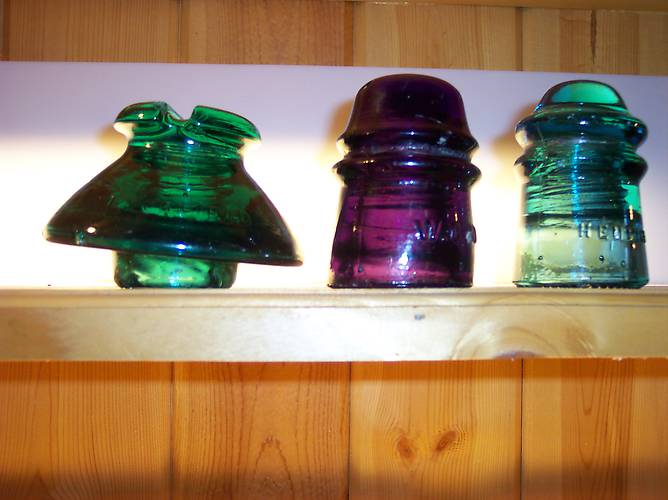The Source/Cause of Leaners
By Michael Gibbons; posted September 21, 2012
View Original: Click to zoom, then click to magnify (2580 x 1932) 744KB

|
Leaners (excluding underpours, damaged skirts, etc) I have always thought a true leaner was created by removing the insulator from the mold before the glass was properly cooled. Additionally, for the most part, I have noticed that a majority of them lean to the right in relation to the front embossing. Could the creation of a leaner actually be an ejection problem from the mold???.....A right handed person banging the mold on a work table from left to right??? Pic...Brookfield CD 316, WGM Co CD 121, Hemingray CD 106 -------Help/Questions (Answered)------- Many i-con member reported an equal amount of insulators leaning to the right and left, so my collection just happens to have a preponderance of insulators leaning to the right In some cases a leaner may be the result of removing an insulator from the mold too early, followed by an annealing that may exacerbate the situation as theorized by some i-con members HOWEVER No scientific proof was provided, but this speculation submitted by an i-con member regarding mandrill placement rings true with me. "Most of the telegraph era leaners, I have .... have a crooked pin hole. Leaners can have an over-full compliment of base glass or a lack of base glass. I'm talking about an over full example. By crooked pin hole .... I mean. The threading mandrill was off center during the threading operation. The pin hole is not in the exact center of the insulator. It's closer to the outer wall on one side or the other. The extra base glass that makes it lean is normally opposite the thin wall side of the insulator. I don't think they lined up the embossing while making early telegraph insulators. I don't think they were all "hand" mandrilled either. There would be a lot more leaners in the market place" |